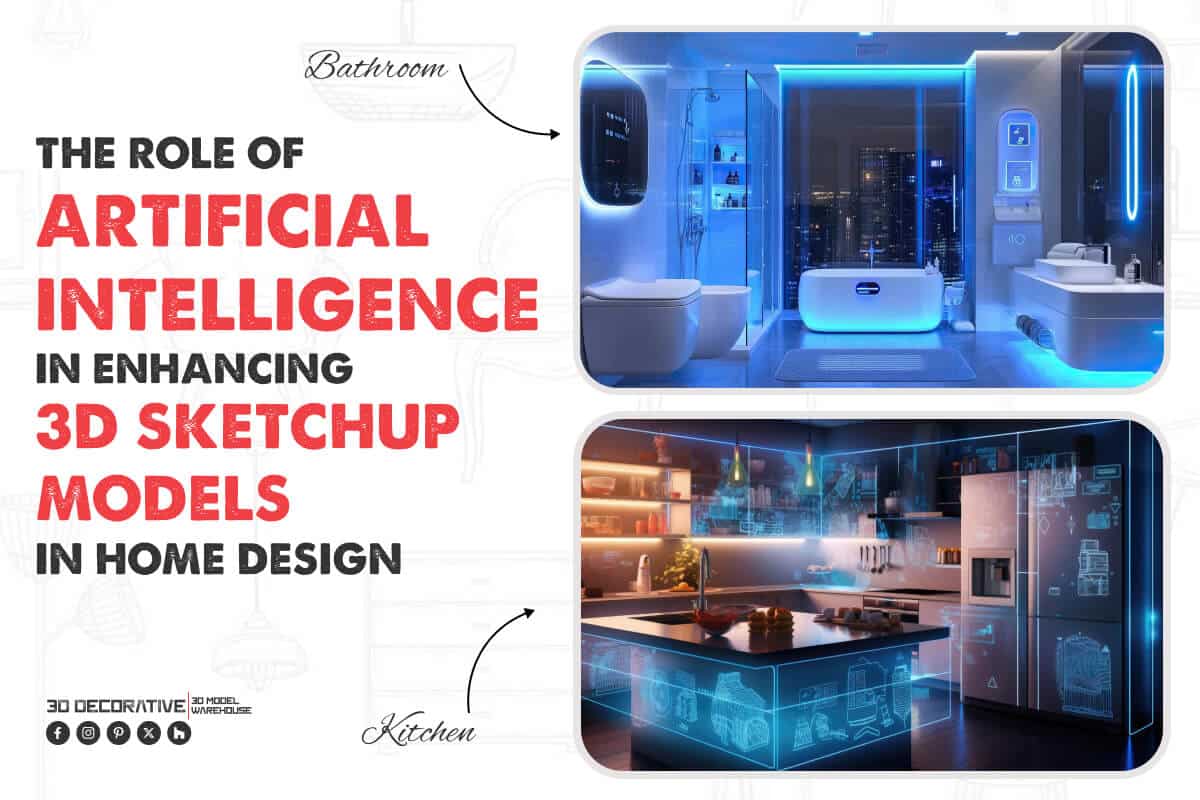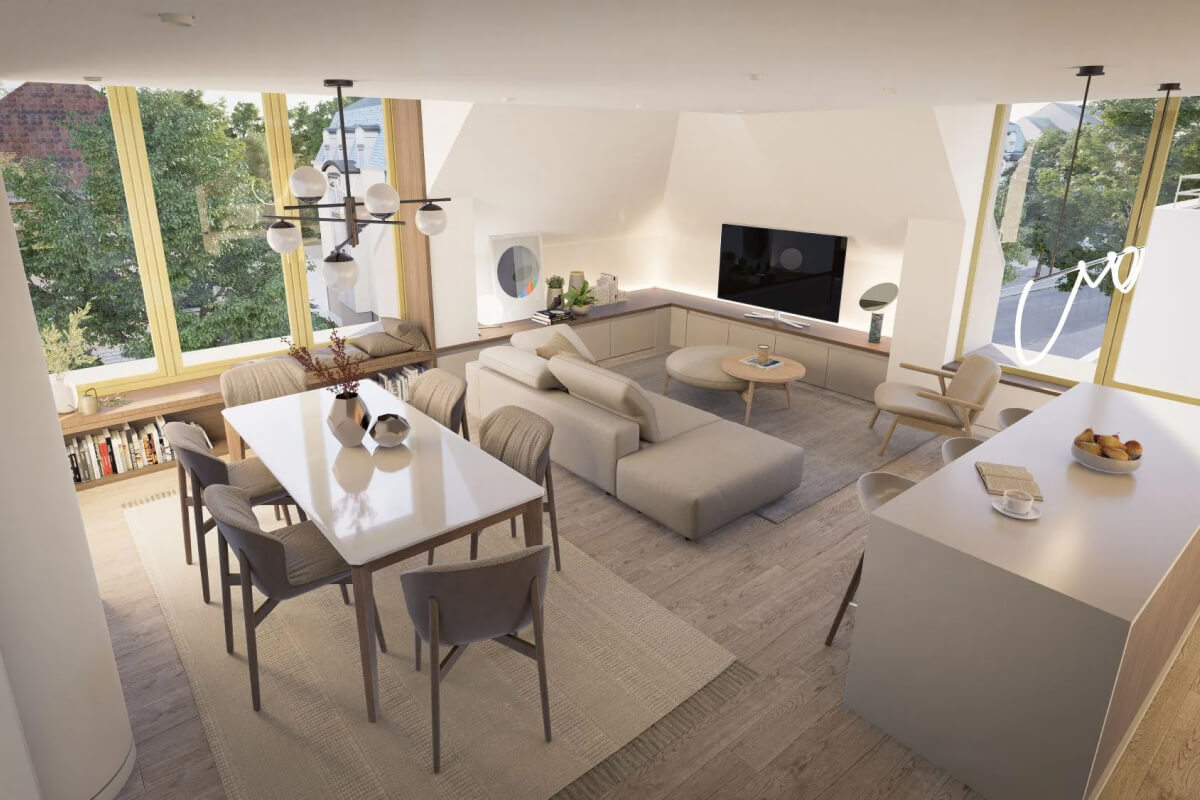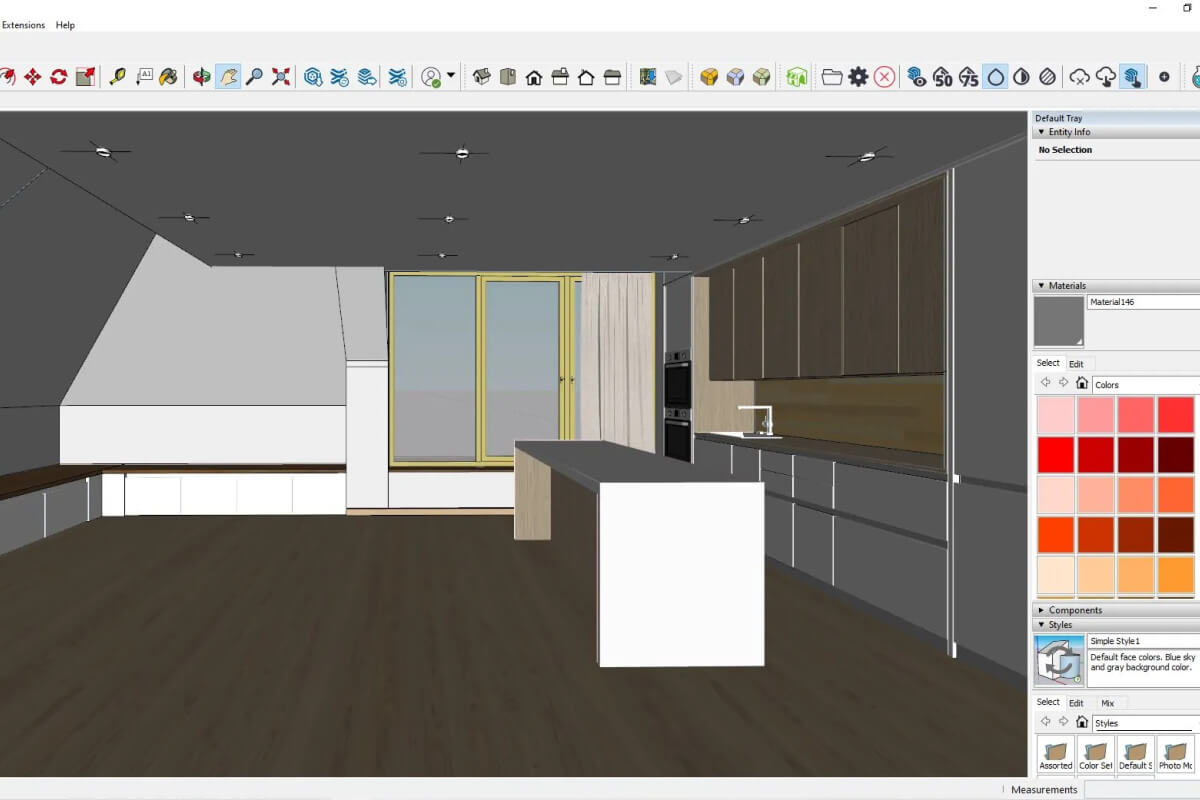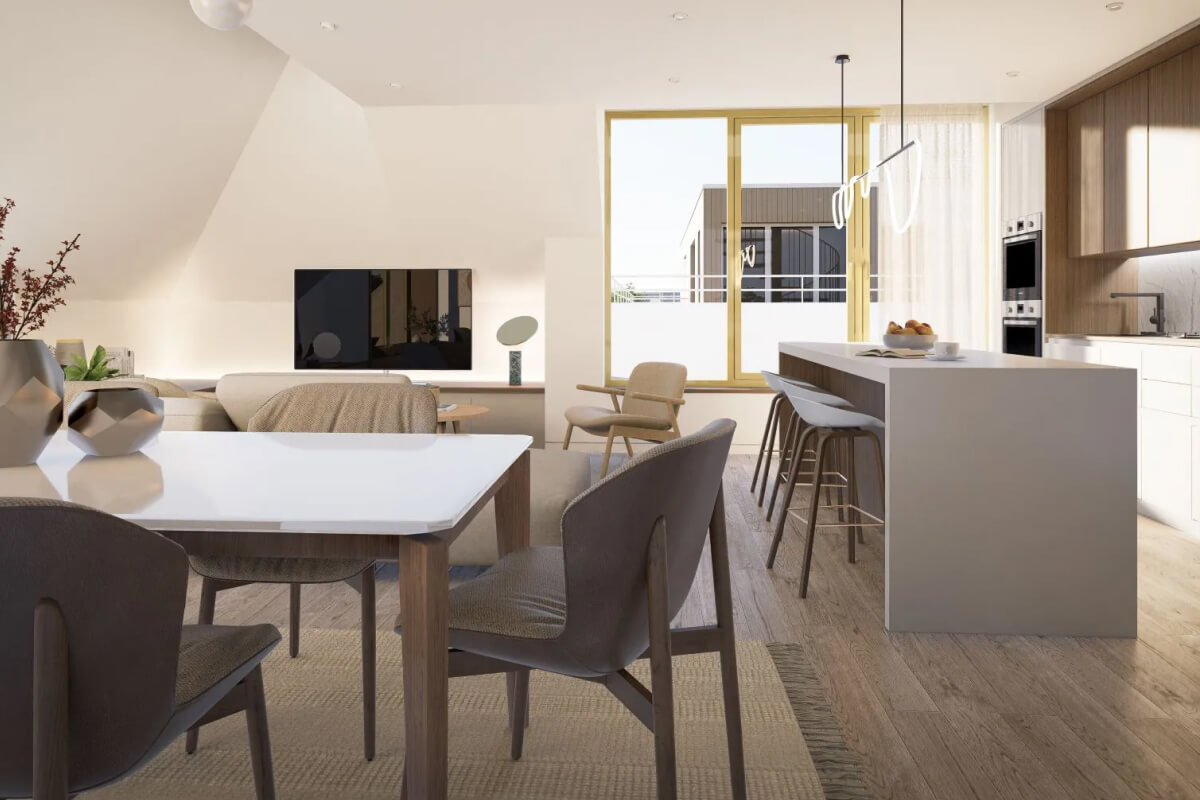The Role of Artificial Intelligence in Enhancing 3D SketchUp Models in Home Design
- Home
- The Role of Artificial Intelligence in Enhancing 3D SketchUp Models in Home Design
- The Role of Artificial Intelligence in Enhancing 3D SketchUp Models in Home Design

3D modeling has become a crucial resource for architects, interior designers, and homeowners in the fast-changing field of home design. For many years, SketchUp has been a popular choice for creating detailed and realistic designs. However, with the rise of artificial intelligence (AI), SketchUp has evolved into a more powerful, efficient, and creative resource. AI is revolutionizing the creation of 3D models for home design by enhancing the precision of the models, speeding up the processes, and allowing for levels of customization that were previously unimagined.
AI-powered tools are transforming the design industry, influencing everything from range hood SketchUp models to kitchen designs and custom SketchUp textures. We should explore how AI is enhancing our 3D home design workflow, increasing both productivity and innovation.
AI-Powered Design Enhancement in 3D Models
Many tedious tasks commonly linked with SketchUp modeling have been streamlined through the use of AI. Designers previously spent substantial amounts of time adjusting layouts, altering dimensions, and incorporating textures. With the advancements of AI, these processes have become more efficient, resulting in enhanced accuracy and productivity.
AI tools can analyze a SketchUp kitchen model and suggest optimal design changes based on preferences for layout, patterns, and usability. By streamlining counter space, improving the placement of appliances, and recommending color palettes, AI reduces uncertainty, enabling designers to focus more on creative exploration.
Accuracy and Precision: AI in Perfecting Models
The capacity of AI to enhance accuracy and precision stands out as one of the primary advantages it brings to SketchUp modeling. Even slight mistakes can lead to costly issues when designing range hood models or other elements in SketchUp. AI tools utilize machine learning to detect structural flaws, rectify errors, and improve proportions.
In the design of range hoods, for example, AI can evaluate the placement of the hood in relation to the kitchen’s layout, ensuring it meets both functional and aesthetic needs. By analyzing practical factors such as the height above stovetops and the necessary ventilation distance, the AI guarantees a design that is visually appealing as well as effective.
By imitating aspects of the environment such as lighting, shadows, and the properties of materials, AI enhances the realism of models. Designers can utilize AI-driven tools to visualize how their creations will look in reality before any construction takes place, allowing for analysis of how light interacts with different textures.
Texture Creation and Customization with AI
To create depth and realism in 3D models, textures play a crucial role. Previously, applying textures to SketchUp models involved complex and time-intensive manual modifications. AI has revolutionized the texture creation process by automating this task and ensuring high-quality, customized outcomes.
AI tools, for instance, can create lifelike textures that replicate the unique veins and designs found in marble when you are designing a custom SketchUp texture for a marble countertop. The appearance in the model accurately reflects how it will look in reality, as AI modifies textures based on the lighting conditions.
AI tools enhance the application of textures, ensuring they are applied seamlessly to models without distortions or noticeable seams. Whether you are creating a cozy rustic living room or a stylish modern kitchen, this precision results in more lifelike outcomes. Additionally, to ensure uniformity across the project, AI can suggest matching textures that align with the overall design theme.
Streamlining Workflow and Increasing Efficiency
By automating repetitive tasks that would typically consume hours of a designer’s time, AI significantly enhances design efficiency. With the automation of processes such as resizing, repositioning elements, and applying materials, designers are now free to focus on more creative aspects of their work.
A designer can swiftly modify a range hood or kitchen model in SketchUp and see the updates instantly reflected across the entire design when AI is used for positioning and scaling objects. This enhances project timelines and increases overall productivity by reducing the time needed for manual adjustments.
AI enhances communication between clients and designers by simplifying the process. With real-time updates, clients can instantly observe modifications, which allows for prompt feedback and reduces the likelihood of miscommunications or delays.
Reducing Human Error
In complex design processes such as home planning, mistakes made by humans are inevitable. AI tools help minimize errors by ensuring that each design element meets real-world criteria. These algorithms adjust designs to meet industry standards and architectural rules, whether it’s verifying the accurate dimensions for range hood SketchUp models or correcting furniture placement errors.
By improving the accuracy of designs from the outset, this predictive ability reduces the necessity for costly revisions later in the process. Automating routine tasks leads to enhanced design outcomes, as it enables designers to concentrate on critical decisions.
The Future of AI in 3D SketchUp Models
In the realm of 3D SketchUp modeling, the prospects for artificial intelligence are promising. As AI technology evolves, designers can expect more advanced features, such as real-time collaboration and interactive modifications to designs. Imagine being able to “walk through” a SketchUp model of a kitchen or range hood, where AI actively adjusts the layout, lighting, and textures in response to user feedback.
The creation of immersive design experiences could also be achieved by integrating AI with virtual and augmented reality. This process of personalization might be further improved by enabling clients to engage with their models via VR headsets while receiving immediate AI suggestions regarding potential adjustments and improvements.
AI can provide insightful suggestions for sustainable or energy-efficient solutions by analyzing vast databases of real-world trends and design patterns. It has the capability to recommend eco-friendly design choices, energy-saving layouts, and sustainable materials, ensuring that residences are both visually appealing and environmentally responsible.
Conclusion
Artificial intelligence is transforming the home design industry by enhancing the development and personalization of 3D SketchUp models. By improving model precision, automating the creation of textures, streamlining workflows, and reducing human errors, AI enables designers to achieve greater levels of productivity and creativity.
AI is assisting home designers in bringing their concepts to life more efficiently, accurately, and uniquely, whether they are developing range hood SketchUp models, kitchen SketchUp models, or bespoke SketchUp textures. As AI continues to evolve, future 3D SketchUp modeling will undoubtedly offer even more innovative and engaging methods for designing beautiful and functional homes.
The potential for design is nearly limitless when using AI as a resource, and the home design process is anticipated to become more efficient, intelligent, and tailored to individual needs compared to earlier methods.
Tags
3D SketchUp modeling tools, Advanced home design technology, AI in architectural design, AI in SketchUp design, AI-powered design tools, Artificial Intelligence in home design, Customizable 3D models, Enhancing 3D SketchUp models, Home design technology, SketchUp modeling for home design, Sketchup Texture




